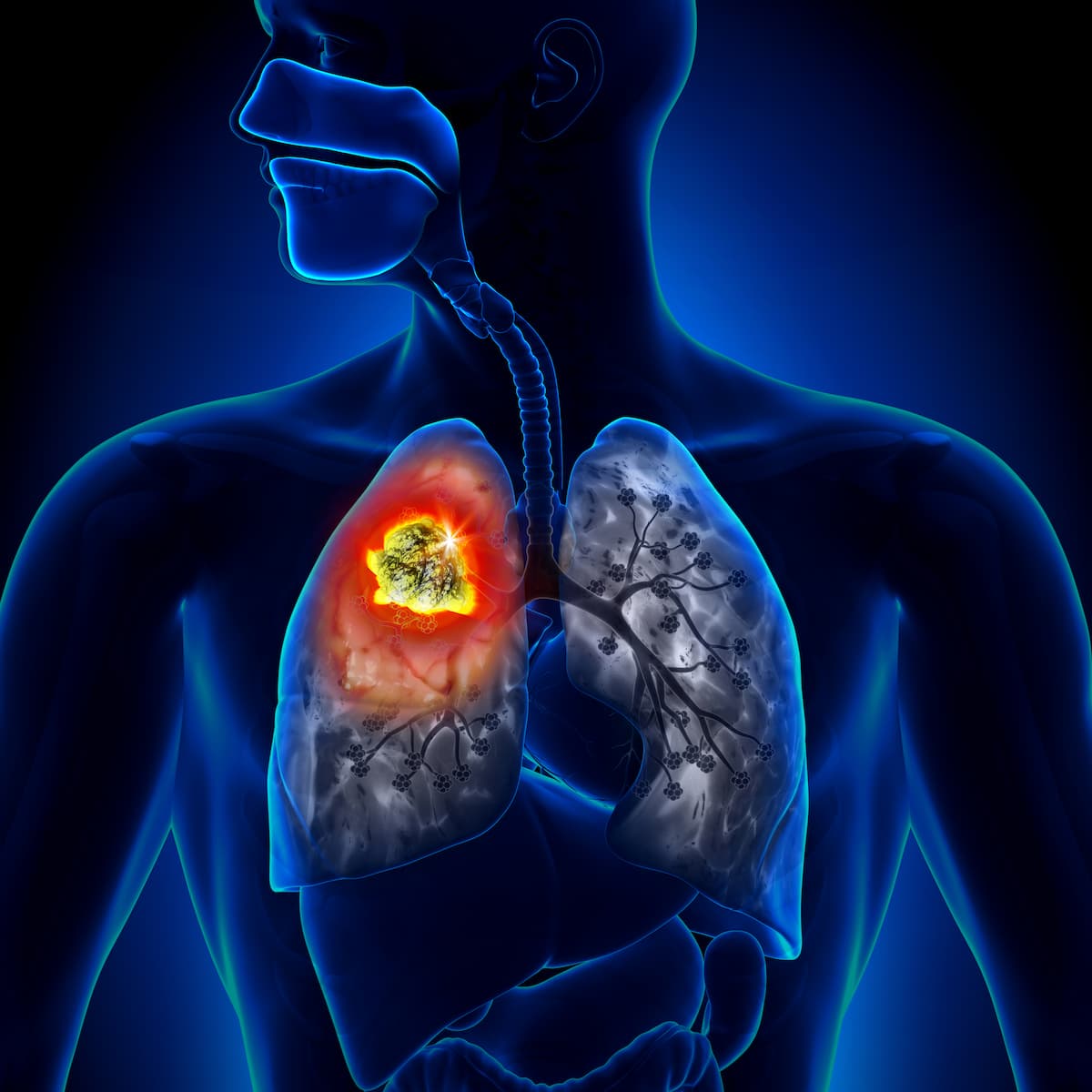Low/Moderate IRAEs Correlate With Atezolizumab Efficacy in Advanced NSCLC
Patients with non–small cell lung cancer who had mild/moderate immune-related adverse effects appear to have improved overall survival compared with those without following atezolizumab-based therapy.
Investigators identified an association between mild to moderate immune-related adverse effects (IRAEs) and efficacy with regimens containing atezolizumab (Tecentriq) in patients with advanced nonsquamous non–small cell lung cancer (NSCLC), according to findings from a pooled analysis of the phase 3 IMpower130 trial (NCT0236778), phase 3 IMpower132 trial (NCT02657434), and phase 3 IMpower150 trial (NCT02366143).
"This highlights the need for nurses to understand IRAEs and how to diagnose them quickly, [as well as] know how to promptly treat the specific IRAE before it can become a grade 3 or higher IRAE, which is often life-threatening or fatal," according to a medical oncology nurse from Penn Medicine.

In atezolizumab-containing arms, median overall survival (OS) was 25.7 months (95% CI, 23.9-29.1) for patients who had IRAEs vs 13.0 months (95% CI, 11.7-13.9) in those without IRAEs. For patients in the control arms, median OS was 20.2 months (95% CI, 18.2-22.8) vs 12.8 months (95% CI, 12.0-13.9) in those with IRAEs vs those without IRAEs, respectively.
Based on a time-dependent Cox model, the OS hazard ratio (HR) between patients with IRAEs and those without IRAEs was 0.69 (95% CI, 0.60-0.78) in the atezolizumab-containing arms and 0.82 (95% CI, 0.68-0.99) in the control arms.
“Many patients with grade 1 or 2 IRAEs are able to be managed with supportive care or corticosteroids and resume therapy once the IRAE is at grade 1 or less,” Beth Sandy, MSN, CRNP, OCN, stated in a written comment to CancerNetwork® on the data. “Interestingly, in this study, patients with severe grade 3 to 5 IRAEs did not have an improved [OS].”
Given the data from the pooled analysis, Sandy, a thoracic medical oncology nurse in the Penn Lung Cancer Program at Penn Medicine, discussed what other nurse practitioners can do to improve the management of IRAEs in patients with NSCLC.
“This highlights the need for nurses to understand IRAEs and how to diagnose them quickly, [as well as] know how to promptly treat the specific IRAE before it can become a grade 3 or higher IRAE, which is often life-threatening or fatal,” Sandy stated.
IMpower130, IMpower132, and IMpower150 were all multicenter, open-label, randomized phase 3 trials designed to assess the safety and efficacy of various atezolizumab-based chemoimmunotherapy regimens in patients with stage IV nonsquamous NSCLC.
In the IMpower130 study, patients were randomly assigned 2:1 to either receive atezolizumab plus carboplatin and nab-paclitaxel or chemotherapy alone followed by maintenance atezolizumab or best supportive care.
Moreover, the investigators of the IMpower132 trial randomly assigned patients 1:1 to receive atezolizumab plus cisplatin or carboplatin plus pemetrexed or chemotherapy alone with subsequent maintenance therapy consisting of pemetrexed with or without atezolizumab.
Lastly, in the IMpower150 study, patients were assigned 1:1:1 to receive either atezolizumab plus bevacizumab (Avastin), carboplatin, and paclitaxel; atezolizumab plus carboplatin and paclitaxel; or bevacizumab plus carboplatin and paclitaxel plus maintenance therapy with atezolizumab plus bevacizumab, atezolizumab, or bevacizumab in each respective arm.
Investigators assessed pooled data from the three clinical trials based on the following categories: atezolizumab-containing treatment vs control, those who had IRAEs vs those who did not, and grade 1 or 2 IRAEs vs grade 3 to 5 IRAEs. Use of a time-dependent Cox model and landmark analyses of IRAEs at 1, 3, 6, and 12 months from baseline helped estimate the HRs for OS and accounted for immortal bias.
Efficacy outcomes in the pooled analysis included OS by treatment in relation to IRAE occurrence status, highest IRAE grade, and landmark IRAE subgroups. Investigators also assessed objective response rate (ORR) based on IRAE occurrence status.
Of 2503 patients included in the analysis, a total of 1577 patients were included in the atezolizumab arm and 926 were in the control arm. The mean patient age was 63.1 years (standard deviation [SD], 9.4) and 63.0 years (SD, 9.3) in the atezolizumab and control arms, respectively. Investigators noted that baseline characteristics were generally balanced regardless of treatment arm or whether patients had IRAEs.
Overall, 48% of patients receiving an atezolizumab-based regimen and 32% of those receiving a control therapy had any-grade IRAEs, which were generally grade 1 or 2. Frequent IRAEs in each respective group included rash (28% vs 18%), hepatitis (15% vs 10%), and hypothyroidism (12% vs 4%).
The confirmed ORR without adjusting for IRAE onset dates was 61% (95% CI, 58%-65%) for those with IRAEs and 37% (95% CI, 34%-41%) for those without IRAEs who received an atezolizumab-containing regimen. Among patients in the control arm, the ORR was 42% (95% CI, 36%-48%) for those with IRAEs vs 34% (95% CI, 30%-38%) for those without IRAEs.
In all landmark subgroups, the median OS was longer for patients with IRAEs vs those without regardless of whether they received an atezolizumab-containing regimen or control therapy. Additionally, patients with IRAEs who received atezolizumab had the longest median OS, and patients without IRAEs who received control therapy had the shortest median OS.
“We know that patients with lung cancer whose cancer is responding to [atezolizumab-based] treatment often experience improvement in quality of life as well as cancer improvement, this has been shown across numerous studies in metastatic NSCLC, even despite [AEs] of the treatment itself,” Sandy stated. “Therefore, keeping patients on their maximum treatment but managing and controlling [AEs] or IRAEs is very important to improve quality of life in addition to treatment response.”
Reference
Socinski MA, Jotte RM, Cappuzzo F, et al. Association of immune-related adverse effects with efficacy of atezolizumab in patients with non-small cell lung cancer: pooled analyses of the phase 3 IMpower130, IMpower132, and IMpower150 randomized clinical trials. JAMA Oncol. Published online February 16, 2023. doi:10.1001/jamaoncol.2022.7711